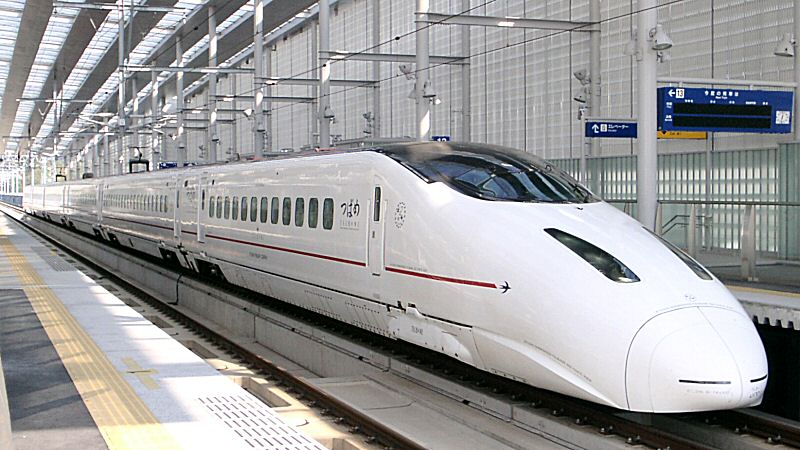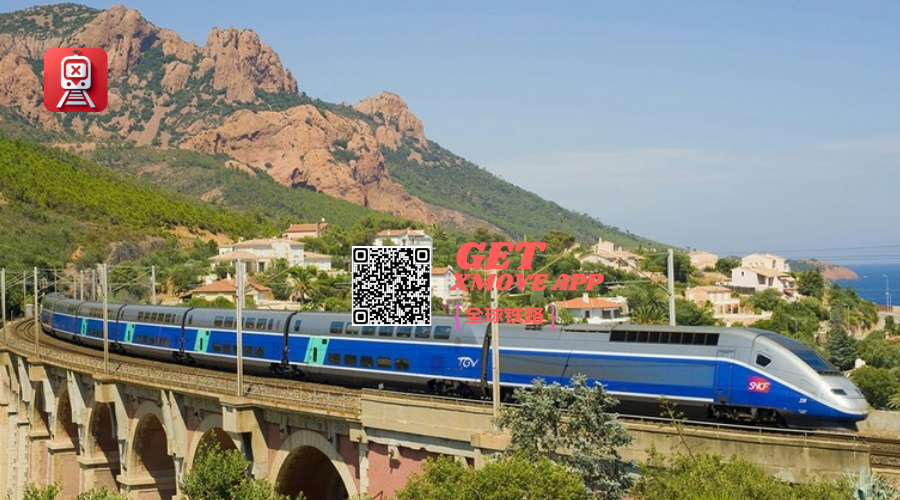TGV

France Train Tickets
The TGV (French: Train à Grande Vitesse, "high-speed train") is France's intercity high-speed rail service, operated by the SNCF, the state-owned national rail operator. The SNCF started working on a high-speed rail network in 1966 and later presented the project to President Valéry Giscard d'Estaing who approved it. Originally designed as turbotrains to be powered by gas turbines, TGV prototypes evolved into electric trains with the 1973 oil crisis. In 1976 the SNCF ordered 87 high-speed trains from GEC-Alsthom. Following the inaugural service between Paris and Lyon in 1981 on the LGV Sud-Est (LGV for Ligne à Grande Vitesse; "high-speed line"), the network, centered on Paris, has expanded to connect major cities across France (including the likes of Marseille, Lille, Bordeaux, Strasbourg, Rennes, Montpellier) and in neighbouring countries on a combination of high-speed and conventional lines. The TGV network in France carries about 110 million passengers a year.
Like the Shinkansen in Japan, the TGV has never experienced a fatal accident during its operational history; the onboard security systems are among the world's most advanced. The high-speed tracks, maintained by SNCF Réseau, are also subject to heavy regulation. Confronted with the fact that train drivers would not be able to see signals along the track-side when trains reach full speed, engineers developed the TVM cab-signalling technology, which would later be exported worldwide. It allows for a train engaging in an emergency braking to request within seconds all following trains to reduce their speed; if a driver does not react within 1.5 km (0.93 mi), the system overrides the controls and reduces the train's speed automatically. The TVM safety mechanism enables TGVs using the same line to depart every three minutes.[1][2]
A TGV test train set the world record for the fastest wheeled train, reaching 574.8 km/h (357.2 mph) on 3 April 2007.[3] Conventional TGV services operate up to 320 km/h (200 mph) on the LGV Est, LGV Rhin-Rhône and LGV Méditerranée.[4] In 2007, the world's fastest scheduled rail journey was a start-to-stop average speed of 279.4 km/h (173.6 mph) between the Gare de Champagne-Ardenne and Gare de Lorraine on the LGV Est,[5][6] not surpassed until the 2013 reported average of 283.7 km/h (176.3 mph) express service on the Shijiazhuang to Zhengzhou segment of China's Shijiazhuang–Wuhan high-speed railway.[7]
The TGV was conceived at the same period as other technological projects sponsored by the Government of France, including the Ariane 1 rocket and Concorde supersonic airliner; those funding programmes were known as champion national policies (literal translation: national champion). The commercial success of the first high-speed line led to a rapid development of services to the south (LGV Rhône-Alpes, LGV Méditerranée, LGV Nîmes–Montpellier), west (LGV Atlantique, LGV Bretagne-Pays de la Loire, LGV Sud Europe Atlantique), north (LGV Nord, LGV Interconnexion Est) and east (LGV Rhin-Rhône, LGV Est). Neighbouring countries Italy, Spain and Germany developed their own high-speed rail services.[citation needed]
The TGV system itself extends to neighbouring countries, either directly (Italy, Spain, Belgium, Luxembourg and Germany) or through TGV-derivative networks linking France to Switzerland (Lyria), to Belgium, Germany and the Netherlands (Thalys), as well as to the United Kingdom (Eurostar). Several future lines are planned, including extensions within France and to surrounding countries. Cities such as Tours and Le Mans have become part of a "TGV commuter belt" around Paris; the TGV also serves Charles de Gaulle Airport and Lyon–Saint-Exupéry Airport. A visitor attraction in itself, it stops at Disneyland Paris and in tourist cities such as Avignon and Aix-en-Provence as well. Brest, Chambéry, Nice, Toulouse and Biarritz are reachable by TGVs running on a mix of LGVs and modernised lines. In 2007, SNCF generated profits of €1.1 billion (approximately US$1.75 billion, £875 million) driven largely by higher margins on the TGV network
Ultimate Guide to French Railway

Ultimate Guide to French Railway
The French railway system is planned and constructed by the French National Railway Agency (Socicte Nationalc des Chemins de Fer Francais, abbreviated as SNCF). The route is centered on Paris and woven in all directions, including high-speed trains (Train a Grande Vitesse, abbreviated as TGV). Routes, and general train routes that go to cities and towns. Among these general train routes, the nationwide inter-regional route is called the "Grande Ligne" (GL for short), and the routes that only travel within a single area are collectively called "Regional Rapid Transport System" (Transports Express Regionaux, referred to as TER).
Popular Train Stations
* Verdun
* Paris Roissy Charles De Gaulle Airport Cdg
* Paris Bastille
* Valenciennes
* Strasbourg
* Reims Ville
* Chambery Challes E
* Versailles Chantiers
* Marseille Saint Charles
* Toulon
* Caen
* Ermont Eaubonne
* Tours
* Mâcon Ville
* Calais Ville
France Train Tickets
Hot Journeys
* Paris -> Hendaye
* Paris -> Bordeaux(Bordeaux)
* Morlaix -> Paris
* Paris -> Annecy(Annecy)
* Lille -> London(London)
* Paris -> Perpignan(Perpignan)
* Marseilles(Marseille) -> Paris
* Avignon -> Paris
* Le Mans(Le Mans) -> Paris
* Paris -> Brussels(Bruxelles)
* Paris -> Geneva(Genève)
* Nice -> Cannes
* Paris -> Avignon
* Paris -> Frankfurt
* Paris -> Muenster(Münster)
* Bordeaux(Bordeaux) -> Paris
* Paris -> London(London)
* Paris -> Poitiers(Poitiers)
* Paris -> Nice
* Paris -> Barcelona
* Lyon(Lyon) -> Paris Roissy Charles De Gaulle Cdg Airport(Aéroport Paris Roissy Charles De Gaulle Cdg)
* Paris -> Interlaken
* Paris -> Geneva(Genève)
* Avignon -> Paris
* Paris -> Geneva(Genève)
* Nice -> Venice(Venezia)
* Lyon(Lyon) -> Paris



